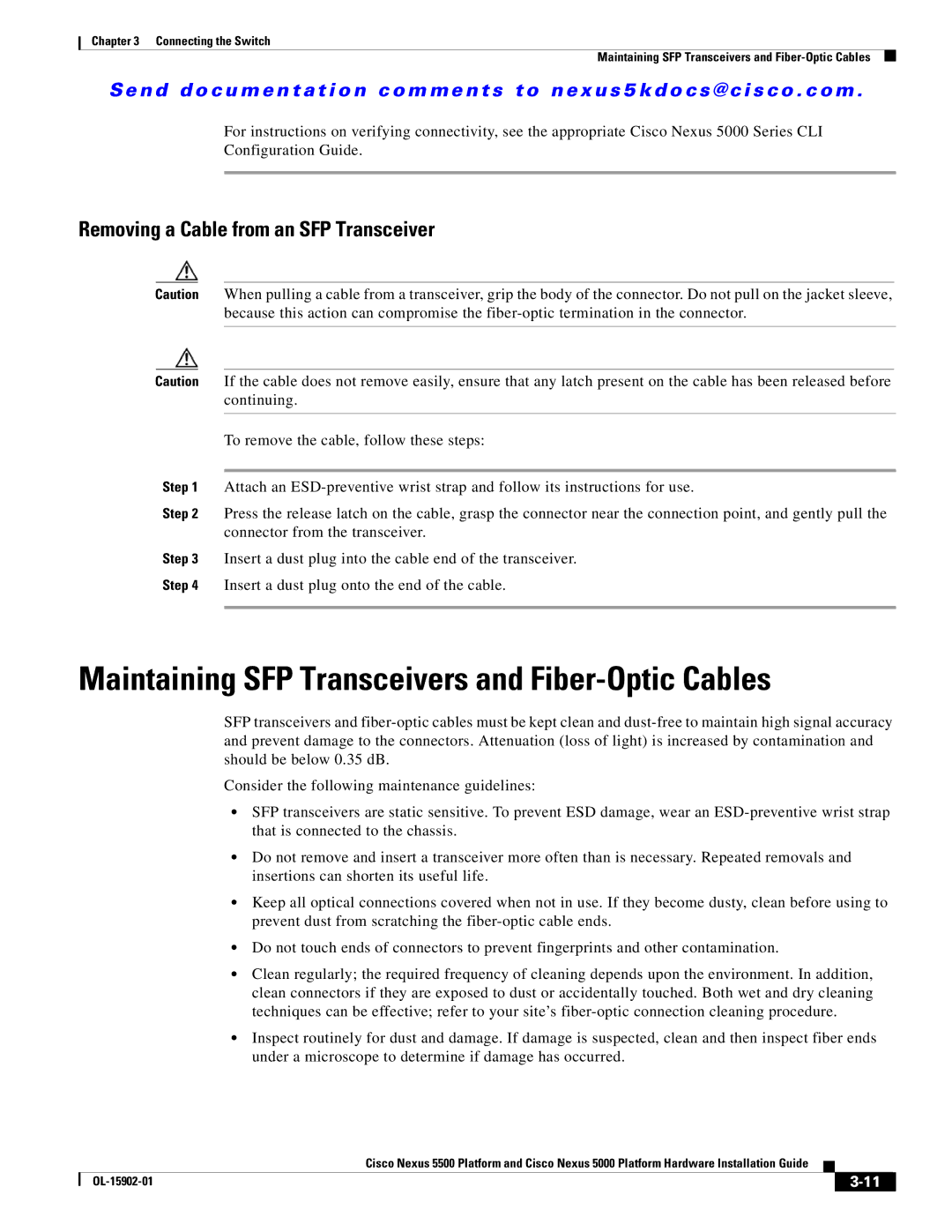
Chapter 3 Connecting the Switch
Maintaining SFP Transceivers and
Se n d d o c u m e n t a t i o n c o m m e n t s t o n ex u s 5 k d o c s @ c i s c o . c o m .
For instructions on verifying connectivity, see the appropriate Cisco Nexus 5000 Series CLI
Configuration Guide.
Removing a Cable from an SFP Transceiver
Caution When pulling a cable from a transceiver, grip the body of the connector. Do not pull on the jacket sleeve, because this action can compromise the
Caution If the cable does not remove easily, ensure that any latch present on the cable has been released before continuing.
To remove the cable, follow these steps:
Step 1 Attach an
Step 2 Press the release latch on the cable, grasp the connector near the connection point, and gently pull the connector from the transceiver.
Step 3 Insert a dust plug into the cable end of the transceiver.
Step 4 Insert a dust plug onto the end of the cable.
Maintaining SFP Transceivers and Fiber-Optic Cables
SFP transceivers and
Consider the following maintenance guidelines:
•SFP transceivers are static sensitive. To prevent ESD damage, wear an
•Do not remove and insert a transceiver more often than is necessary. Repeated removals and insertions can shorten its useful life.
•Keep all optical connections covered when not in use. If they become dusty, clean before using to prevent dust from scratching the
•Do not touch ends of connectors to prevent fingerprints and other contamination.
•Clean regularly; the required frequency of cleaning depends upon the environment. In addition, clean connectors if they are exposed to dust or accidentally touched. Both wet and dry cleaning techniques can be effective; refer to your site’s
•Inspect routinely for dust and damage. If damage is suspected, clean and then inspect fiber ends under a microscope to determine if damage has occurred.
|
| Cisco Nexus 5500 Platform and Cisco Nexus 5000 Platform Hardware Installation Guide |
|
| |
|
|
| |||
|
|
|
| ||
|
|
|
| ||
